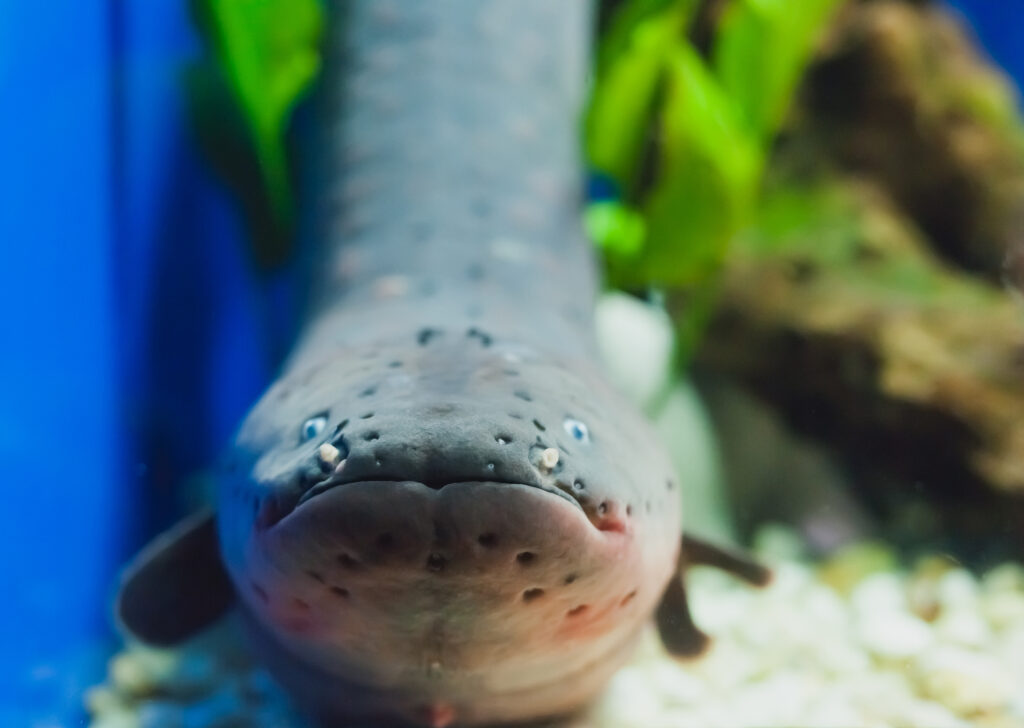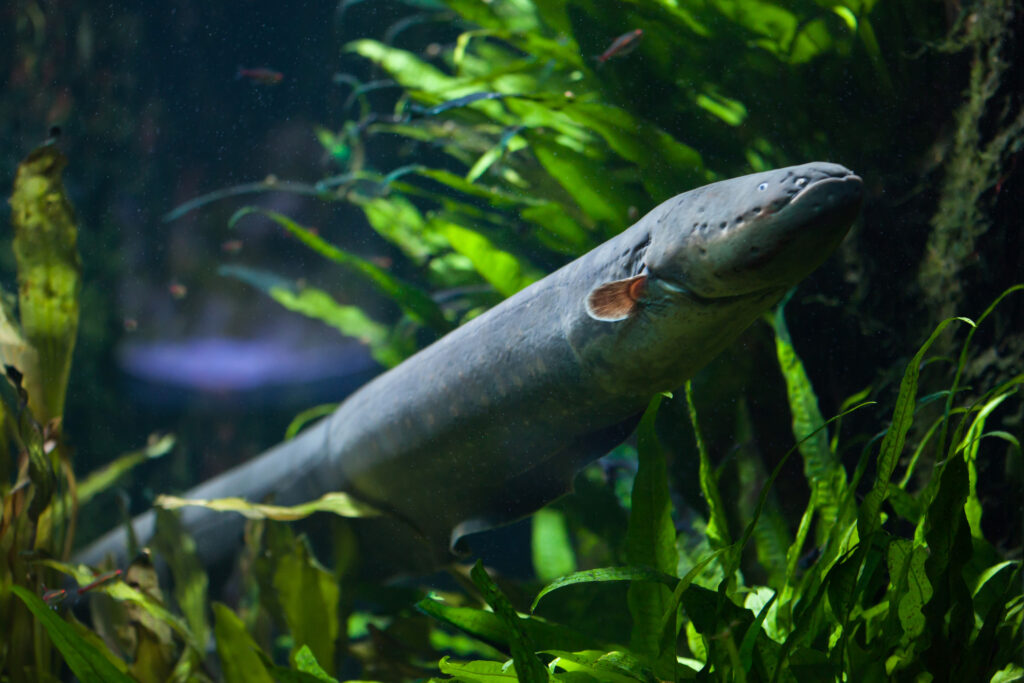Electric eels are fascinating creatures native to the freshwater ecosystems of the Amazon and Orinoco river basins in South America. Despite their name, they are more closely related to catfish and carp than true eels.
In this blog post, we will delve into the captivating world of electric eels, exploring their unique characteristics, behaviours, and the electrifying mechanism that sets them apart from other aquatic species.
What is an electric eel?
Electric eels, often referred to as such, are more closely related to catfish and carp than true eels. Their scientific classification is Gymnotidae. As fish, electric eels exhibit a distinctive social behaviour, forming groups known as swarms.
Electric eel vs true eel:
Contrary to their name, electric eels aren’t true eels. True eels belong to the order Anguilliformes, whereas electric eels belong to the order Gymnotiformes. The distinctions between these two types of aquatic creatures lie in their evolutionary history, morphology, and behaviour.

How do electric eels produce electricity?
Electric eels have a remarkable ability to generate electricity, a feature that sets them apart in the aquatic world. Each side of their body has around 70 columns. In turn, each column contains 5000–10 000 electrocytes. which act like tiny batteries. These cells discharge simultaneously when the eel feels threatened or is attacking prey, producing an electric shock of up to 860 volts. This defence mechanism is attributed to three organs: the main organ, Hunter’s organ, and Sach’s organ.
The purpose behind producing electricity is twofold: stunning prey and dissuading predators. The electric shock serves as an efficient means for the electric eel to navigate its surroundings, locate prey, and defend itself against potential threats.
What do electric eels look like?
Electric eels are often compared to true eels due to their long, slender bodies. They can grow up to 8 feet (2.5 metres) in length and have a snake-like appearance with a flattened head. Their thick, scaleless skin is usually dark grey to brown, while the underside is a yellow-orange colour. Interestingly, only 20% of their body length contains vital organs, with the remaining 80% dedicated to electric organs.
These creatures have poor eyesight but compensate by emitting a weak electric signal, functioning like radar to navigate, find mates, and locate prey. They lack pelvic fins and primarily extract oxygen from the water’s surface.

Habitat of an electric eel:
Electric eels inhabit murky pools and calm stretches in the middle and lower Amazon and Orinoco river basins. Unlike true eels, they exclusively reside in freshwater habitats. The distinct wet and dry seasons in their habitat bring about significant changes, influencing the availability of suitable environments for electric eels.
What do electric eels eat?
Adult electric eels are generalist carnivores, consuming fish, crustaceans, insects, and small vertebrates such as amphibians, reptiles, and mammals. Juveniles primarily feed on invertebrates, while newly hatched electric eels consume unhatched eggs. The electric eel’s electricity is a crucial tool for hunting, aiding in stunning and capturing prey.
Additional electric eel facts
- Electric eels can leap out of the water to attack predators.
- They lay eggs in nests made of saliva.
- Electric eels can accidentally electrocute themselves and other eels.
- With a shocking capability of up to 860 volts, they could power a 40-watt DC lightbulb.
- Electric eels served as inspiration for the creation of the first batteries.
Electric eels, with their electrifying abilities and unique characteristics, continue to captivate scientists and enthusiasts alike. Beyond their captivating features, these creatures play a vital role in maintaining the balance of their freshwater ecosystems.
Here at Bristol Aquarium, we are home to honeycomb moray eels and garden eels. In particular, honeycomb moray eels are fascinating creatures with two sets of jaws, making them incredible predators. You can find them in our Coral Seas exhibit!
For a chance to see our eels up close and personal, book your visit to Bristol Aquarium today!
